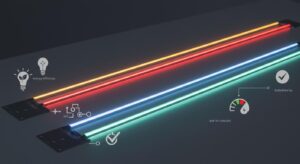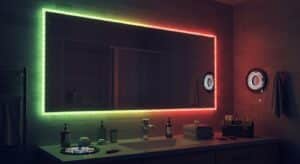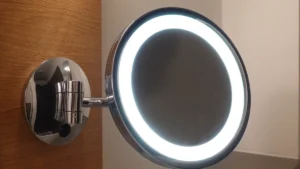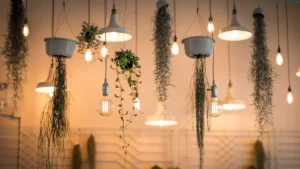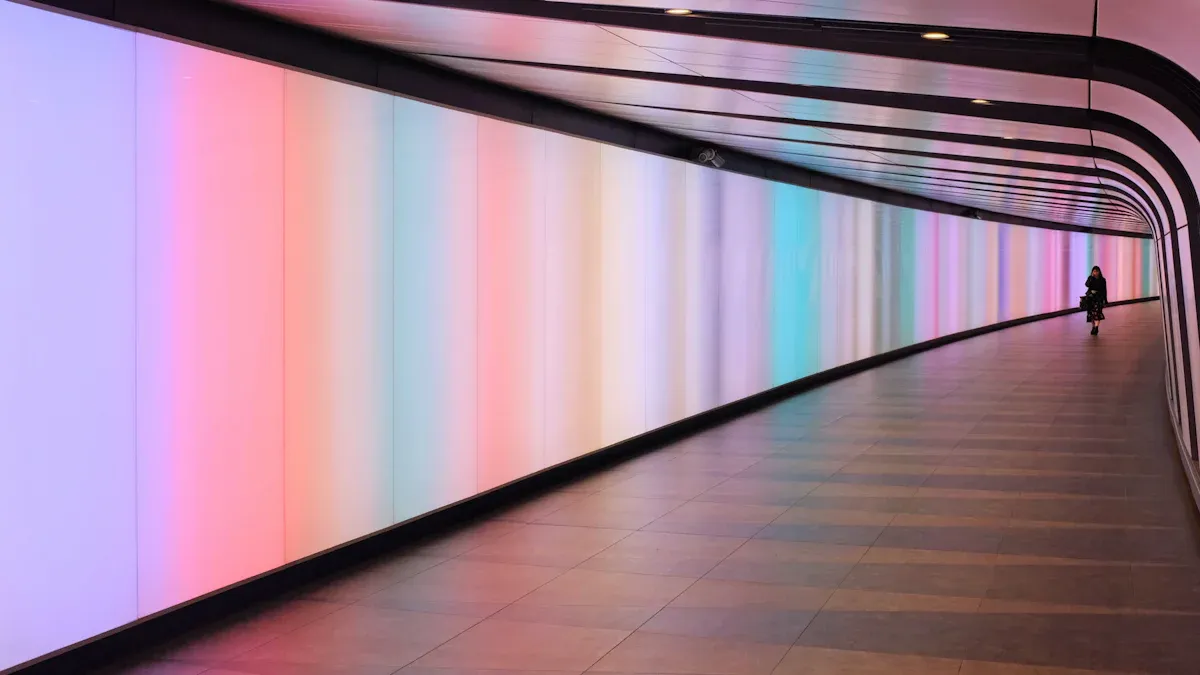
LED strip modules are small and bendable lights used in many places. They have several tiny LEDs on a strip, often with sticky backing for easy setup. These lights are bright but use little power, making them great for homes and businesses.
You can find them in stores, houses, and cars. More people want flexible LED lights, and the market may grow to $65.13 billion by 2030. Better technology and eco-friendly ideas have made them more popular, changing how lighting is used today.
Key Takeaways
LED strip lights save energy, using 80% less power than old bulbs. This helps cut down electricity costs.
These lights are bendable and useful for many purposes, like decorating homes or lighting outside areas.
LED strips last a long time, up to 50,000 hours. This means you won’t need to replace them often.
You can change their color and brightness to make cool designs that match your taste.
Installing them correctly and taking care of them keeps them working well for a long time.
What Are LED Strip Modules?
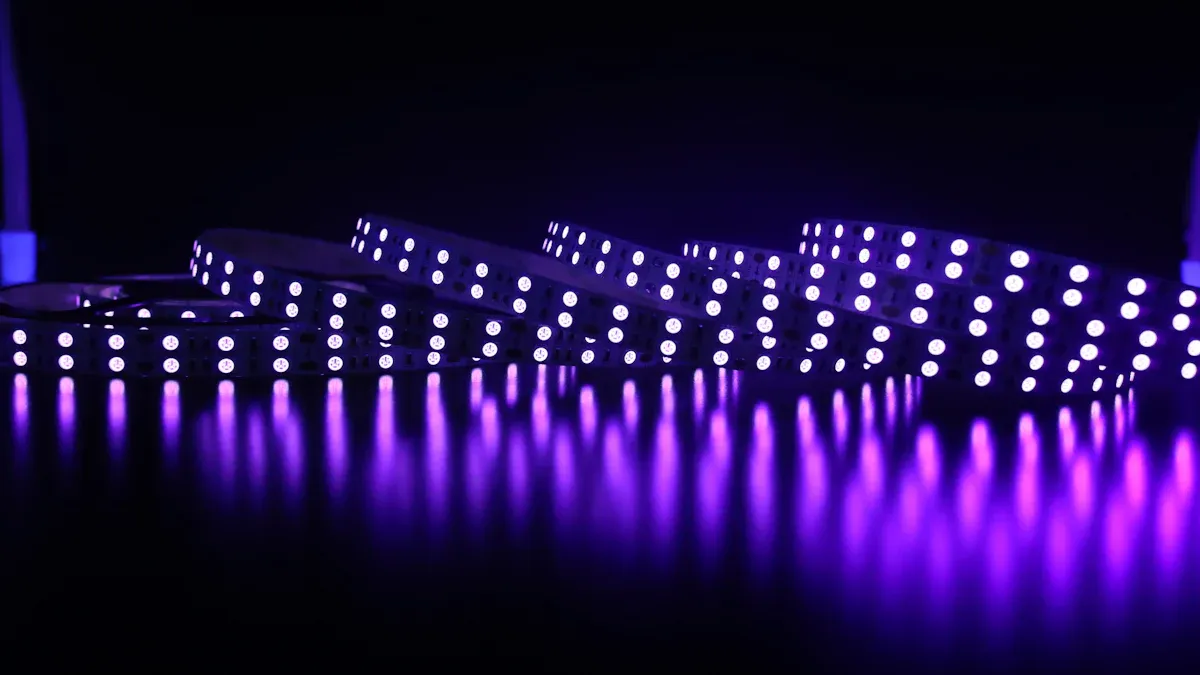
Structure and Components
LED strip modules are made of parts that create bright light. They are built on a printed circuit board (PCB). The PCB can be flexible for curves or rigid for straight areas. Small LED chips on the strip light up when powered. These chips are lined up to give even light.
The housing, made of aluminum or plastic, protects the LEDs. It also helps keep them cool. Sticky backing makes it easy to attach the strips to smooth surfaces. For outdoor use, waterproof strips with IP68 ratings keep out water and dust.
Inside LED strips are PCBs, power supplies, connectors, and housing. Picking the right parts ensures they work well and last long.
Specification | Description |
|---|---|
Power Rating | Watts per meter (W/m), changes with LED type and number. |
Light Output | Lumens per meter (lm/m), shows how bright the light is. |
PCB Type | Flexible for curves or rigid for straight lines. |
Installation Method | Sticky backing for smooth areas, waterproof for outdoors, and aluminum slots for dust safety. |
Waterproof Strips | IP68 rated, good for wet places and outside use. |
How They Work
LED strip modules turn electricity into light. When connected to power, current flows through the PCB and lights up the LED chips. These chips use special materials to shine brightly. The light’s color and brightness depend on the LED chip type.
The strips work with different power supplies and voltages. Some have dimming features to change brightness. Smart LED strips can connect to home systems for remote control and schedules.
LEDs save energy, using 80% less power than old bulbs. This makes them a green choice for modern lighting.
Types of LED Strip Modules
There are many types of LED strip modules for different needs. Single-color strips show one color, like white or blue, and are simple to use. RGB strips mix red, green, and blue to make many colors. RGBW strips add white for brighter and better colors.
Smart LED strips use Wi-Fi or Bluetooth for phone or voice control. Waterproof strips are great for outside, and high-density strips are brighter for big spaces.
Specification | Description |
|---|---|
Lumen | Measures how bright the light looks to people. |
CRI | Shows how true colors look under the light. |
Ingress Protection | Rates how well it blocks solids and liquids. |
Maximum Run Length | Checks if voltage drop dims the light along the strip. |
LED strip modules are useful for decoration, tasks, or accents. Whether for your home, office, or outdoors, there’s a strip for you.
Benefits of LED Strip Modules
Energy Efficiency and Cost Savings
LED strip modules use much less energy than old lights. They turn most electricity into light, wasting very little energy. This helps lower your power bills and is better for the planet. For example, LEDs use 80% less power than regular bulbs. You get the same brightness but save money.
LED strips also last a long time, up to 50,000 hours. You won’t need to replace them often. This saves money on buying new lights and reduces maintenance work. Whether for your home or business, these savings make LED strips a smart choice.
💡 Tip: Use dimmers or smart controls with LED strips. This saves more energy and lets you adjust the light easily.
Flexibility and Versatility
LED strip modules are very flexible. They can bend, twist, and fit in small spaces. You can place them under cabinets, along curved walls, or in tight spots. Their design works well in many places.
These strips are used in hotels, stores, and smart homes. They are great for cove lighting, contour lighting, and interactive spaces. In 2023, LED strip projects grew by 32%, showing their rising popularity.
Year | Project Submissions Increase |
|---|---|
2023 | 32% year-over-year increase |
LED strips come in many types, like single-color, RGB, and smart options. You can pick the one that fits your needs. Whether you want soft lighting or bright colors, LED strips can do it all.
Durability and Longevity
LED strip modules are made to last. They are tested to stay bright and avoid sudden failures. Standards like LM-80-08 and IEC 62717 check how well they work over time. LEDs keep 70% to 80% of their brightness for up to 50,000 hours. This means they will work for years without needing replacements.
Strong materials like aluminum or plastic protect the strips. These housings keep out dust, water, and damage. Waterproof strips with IP68 ratings are perfect for outdoor use. They work well even in tough conditions.
🌟 Note: Buying good-quality LED strips means they last longer and work better. This saves you money over time.
Aesthetic Appeal and Customization
LED strip modules can make any space look amazing. They let you design lighting that fits your style. Whether you want soft accents or bold designs, these lights can change your room completely.
Why LED Strip Modules Are Special
Wide Range of Colors: LED strips offer many color choices like single-color, RGB, and RGBW. Pick warm colors for cozy areas or bright ones for fun spaces.
Adjustable Brightness: You can change how bright the lights are. Use dim lighting to relax or bright lighting for work.
Customizable Lengths: Cut the strips to fit your space. This makes them great for both small and big projects.
🌟 Tip: Try RGB or smart LED strips for cool effects. They can change colors and patterns to make your space more creative.
Fun Ways to Use Them
LED strip modules are perfect for decorating. Put them under cabinets, along stairs, or behind mirrors for a modern look. Use them to highlight art or cool parts of your home.
Application | Description |
|---|---|
Cove Lighting | Adds soft light to walls or ceilings for a fancy feel. |
Backlighting | Makes TVs, mirrors, or shelves glow beautifully. |
Outdoor Lighting | Lights up paths or gardens with waterproof LED strips. |
Easy Personalization
Smart LED strips make customizing even easier. Control them with apps or voice commands. Change colors, set timers, or sync lights with music for a fun vibe.
💡 Note: Connect smart strips to home systems for easy control. You can adjust settings without touching the lights.
LED strip modules let you design lighting that shows your personality. Their flexibility and beauty make them popular with homeowners and designers.
Comparing LED Strip Modules to Other Lighting Options
LED Strip Modules vs. LED Modules
LED strip modules and LED modules are made for different uses. Strip modules are bendable and good for decoration or accents. You can shape them around corners or cut them to fit spaces. LED modules are stiff and used in factories or stores where strong light is needed.
Here’s how they compare:
LED Type | Brightness (lumens) | Efficiency (lumens/watt) | Heat Level (ºC) |
|---|---|---|---|
Mid-Power LEDs | Changes by model | Changes by model | 25 to 100 |
5050 LED Package | Changes by model | Changes by model | 25 to 100 |
3528/2835 LED Package | Changes by model | Changes by model | 25 to 100 |
Strip modules are easy to install and very flexible. LED modules give stronger light and work well in tough places.
🌟 Tip: Use strip modules for fun designs. Pick LED modules for heavy-duty jobs.
LED Strip Modules vs. Traditional Lighting
Old lights, like regular bulbs, are less efficient than LED strips. Bulbs use more power and get very hot. LED strips save up to 80% energy, making them cheaper and better for the planet.
Bulbs don’t offer many design choices. LED strips let you pick colors, brightness, and where to place them. For example, you can use strips to light up cool parts of your home. Bulbs can’t do this.
💡 Note: LED strips last longer than bulbs. This saves money and time on replacements.
Key Factors for Choosing the Right Option
Think about these points when picking lighting:
Aspect | Details |
|---|---|
Purpose | Decide if you need lights for looks or tasks. |
Application | Match the lights to homes, offices, or factories. |
Features | Look at energy use, brightness, and how long they last. |
Creativity | See how each option fits your ideas and needs. |
LED strips are great for creative designs. LED modules are best for strong lighting. Old bulbs work for simple needs but lack modern features.
🌟 Tip: Check your space and goals to pick the best lighting.
Practical Applications and Considerations
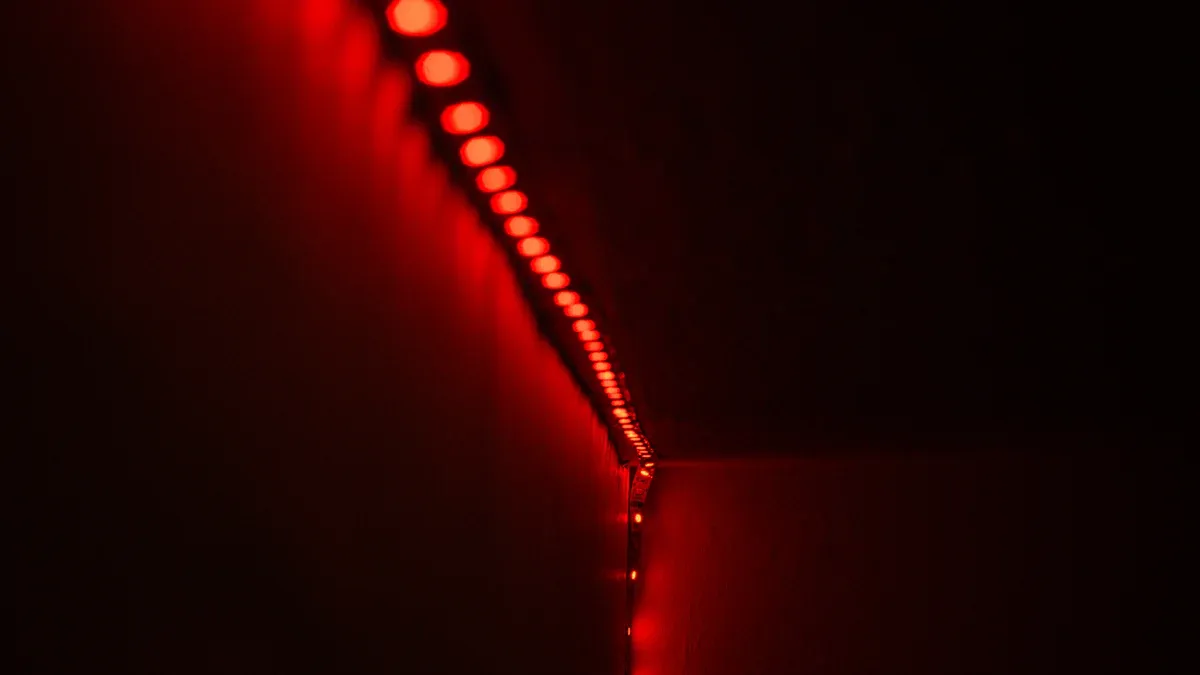
Common Uses for LED Strip Modules
LED strip modules are very useful and can improve many spaces. They work for both practical and decorative purposes. At home, use them under cabinets, on stairs, or behind mirrors and TVs. They also make living rooms and bedrooms look modern and stylish.
In businesses, LED strips are great for stores, restaurants, and hotels. They highlight items, set the mood, and make spaces more inviting. Outside, they light up gardens, paths, and buildings. Waterproof strips last longer in these areas.
For events and creative ideas, LED strips are amazing. Use them for cool lighting effects, stage setups, or fun designs. Their flexibility and easy customization make them popular with designers and DIY fans.
Power Supply and Compatibility
Picking the right power supply is important for LED strips to work well. Follow these simple tips:
Voltage Selection: Use 12V or 24V for homes. For outdoor or business use, pick 24V or 220V.
Current Calculation: Add up the current based on your LED strip’s power and voltage. Make sure the power supply can handle it.
Wattage Margin: Choose a power supply with 20% to 50% more wattage than needed.
Power Factor: Pick a power supply with a power factor of 0.9 or higher for better performance.
Efficiency: High-efficiency power supplies save energy and reduce heat.
Protection Level: Match the IP rating to the location. Use IP20 indoors and IP65 or IP67 outdoors.
These steps help avoid problems like overheating, flickering, or short lifespans for your LED strips.
Installation Tips
Installing LED strips the right way helps them last longer and work better. First, plan your project. Decide where to place the strips and measure how much you need. Make sure all parts, like the power supply, match.
When setting up, connect wires correctly. If the lights don’t work, turn off the power and check the connections again. Don’t exceed the maximum length to avoid dim lights.
Before finishing, test the whole system. This helps you find and fix problems early. Follow the manufacturer’s instructions for safety. For waterproof strips, seal the connections carefully.
💡 Tip: Plan your layout and test everything before sticking the strips down. This saves time and avoids mistakes.
Maintenance and Troubleshooting
Taking care of your LED strip modules helps them last longer. Follow these easy steps to avoid problems and keep them working well.
Regular Maintenance Tips
Check Connections: Look at the connections often. Loose wires can stop power or signals.
Watch the Environment: Keep strips away from too much heat or moisture. These can harm the lights and power supply.
Use Good Parts: Buy high-quality strips and power supplies. Better parts last longer and work better.
Inspect Regularly: Make a habit of checking wires, hardware, and software. This helps catch problems early.
Troubleshooting Common Issues
If something goes wrong, try these fixes:
Problem | How to Fix It |
|---|---|
Lights dim at one end. | Use thicker wires or fix the circuit to handle power better. |
Short circuits from bad soldering. | Look for bad connections and test with a multimeter to find the issue. |
Power supply too weak for long strips. | Upgrade the power supply or change the circuit to a parallel setup. |
Advanced Troubleshooting Techniques
For harder problems, try these ideas:
Step | What to Do |
|---|---|
Test voltage in different places. | Use a multimeter to check if power flows evenly. |
Look for hidden short circuits. | Check connections and test resistance to find where the problem is. |
Fix voltage drop problems. | Use the right wire size and design the circuit properly. |
Tips for Long-Lasting Strips
Test everything before you stick the strips down.
Save backup settings for your control software.
Replace broken parts with good-quality ones to keep the system strong.
By caring for your LED strip modules and fixing issues quickly, you’ll enjoy bright and reliable lighting for a long time.
LED strip modules are a smart and stylish way to light up spaces. They save energy, cost less over time, and fit into many designs. These features make them great for homes, businesses, and outdoor areas.
Benefit | Description |
|---|---|
Energy Efficiency | LED strips shine brightly while using less power, helping the planet. |
Cost-Effectiveness | They last longer and need less fixing, saving money on bills. |
Design Flexibility | Easy to use in creative designs, making spaces look better. |
Use LED strips to improve your home’s look or make cool displays for work. Try them out to see how they can change your space with modern lighting.
FAQ
What can you use LED strip modules for?
LED strip modules are great for decoration and lighting tasks. Use them under cabinets, on stairs, or outside. Their bendable design makes them perfect for creative ideas in homes or businesses.
How do you pick the right LED strip module?
Choose based on how bright, colorful, or waterproof you need it. For long strips, make sure the power supply fits the voltage and wattage. Good-quality LED strips last longer and work better.
Can you cut LED strip modules to fit?
Yes, most LED strips can be trimmed at special marks. This helps you adjust the length for your project. Always follow the maker’s guide before cutting.
Are LED strip modules okay for outdoor use?
Yes, waterproof LED strips with IP65 or higher ratings are safe. They block water and dust, so they’re great for gardens, patios, and paths.
How do you take care of LED strip modules?
Check the connections often and clean off any dust. Keep them away from too much heat or water. Use good power supplies to avoid flickering or damage.
See Also
Understanding Cob Led Strips And Their Functionality
An Introductory Guide to LED Modules and Applications
Selecting The Perfect LED Strip Lights For Linear Lighting
Improving Signage Illumination With LED Modules
Selecting The Ideal LED Light Module For Your Needs
